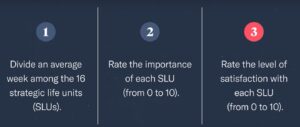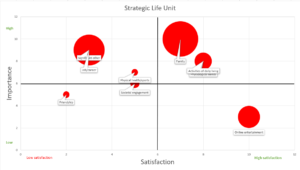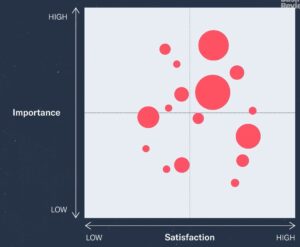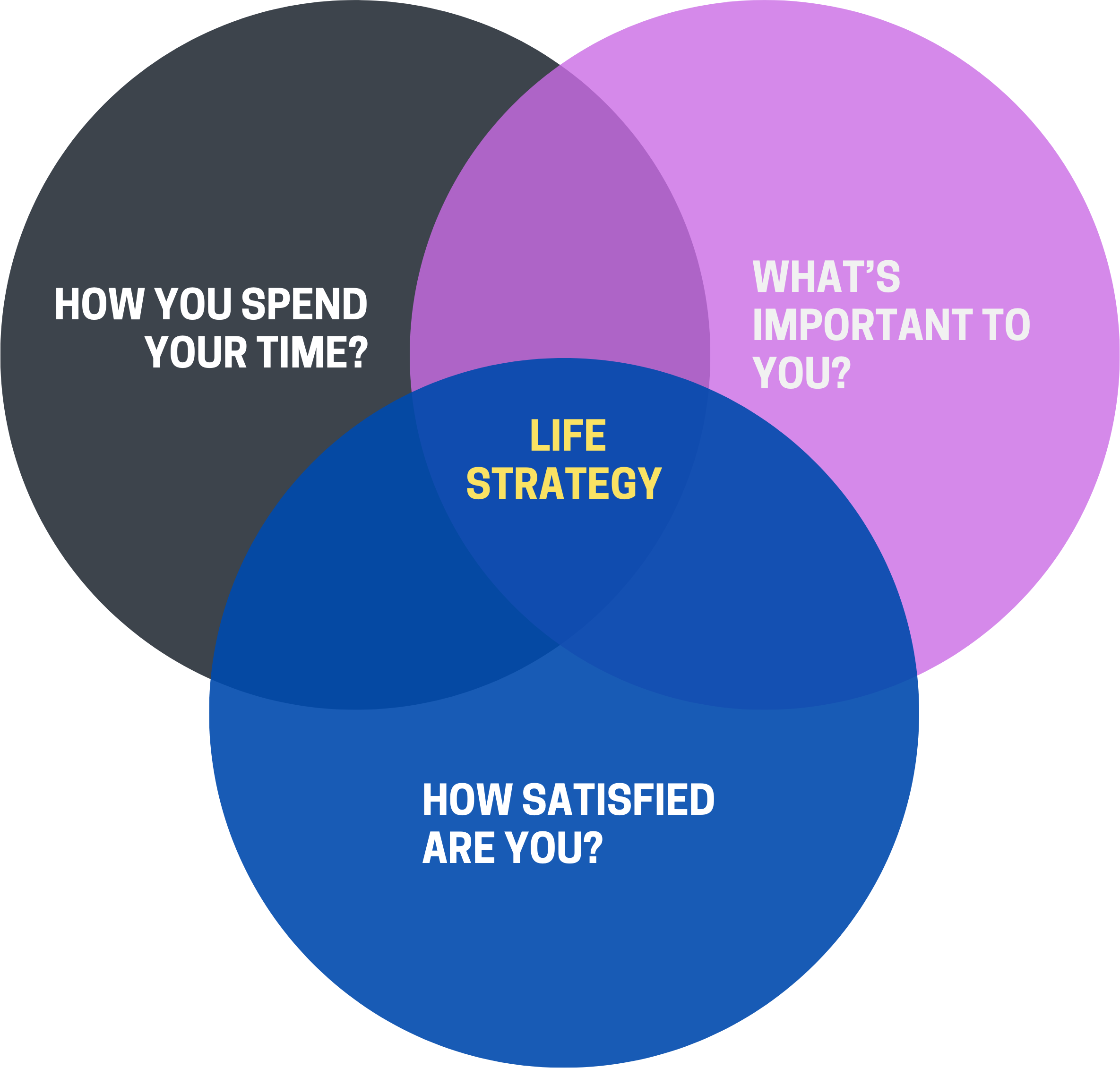TL;DR:
What if you could split your life into 16 units and apply strategic planning principles, like those used in investment management, to various aspects of life? What if you could use that knowledge to systematically plan how to spend your time, energy, and capital in those areas for a balanced and fulfilling life? If this interests you then keep reading.

Welcome
Welcome aboard; whether you stumbled upon my blog by chance or guided by your curiosity, I am glad you are here. Sharing thoughts can be exciting but challenging as well. Still, in my profound journey to improve my life, I have learned a few lessons that can help my readers reach their life goals.
Wondering what makes me eligible enough to help?
After spending 17 years in the fast-paced and incredibly competitive software industry as a Senior Engineering Manager, I have nurtured an essential skill of balancing personal and professional goals for maximum satisfaction. My life is not just about the line of codes but an amalgamation of several personalities. Simply put, I am a tech enthusiast who is always excited to learn, but I am also a dedicated bibliophile and a documentary buff. And yes, traveling always puts me in a good mood.
Understanding Strategic Life Portfolio
On several occasions in the past, I wondered how some people can achieve so much in their lives (not just materialistically, but also personally and spiritually). These people have the same number of hours every day and can still somehow draw maximum satisfaction from their day.
The answer seems simple – plan your life to each daily goal.
And I did. For a long time, I have practiced a yearly planning cycle and relied on the Wheel of Life technique for most of the period. It works but not to my satisfaction, and my search for a more strategic and effective technique led me to Strategic Life Portfolio.
I will cut to the chase; here is the video where I learned about it. Here’s an overview of using strategic thinking to create the life you want.
Strategic Life Portfolio (SLP) is a concept based on strategic planning and investment management principles integral to the finance industry. The difference is rather than focusing on financial assets, SLP applies to various aspects of your life.
Let me make it more straightforward to grasp the essence of SLP. Think of your life as a diverse investment portfolio; instead of different types of investment options, it comprises multiple sectors – relationships, health, career, finances, personal interests, and more. Just as each of your investment types demands adjustments for a balanced and positive portfolio, different sectors of your life demand attention and resources (time, capital, etc.).
Balance is of the essence for contentment and a sense of satisfaction. If you focus too much on one area of SLP, others may suffer. It is surprising to see how many people suffer from continuous dissatisfaction and stress when all they need is to adjust the allocation of resources to various aspects of their lives.
With the Strategic Life Portfolio approach, anyone can achieve greater happiness, fulfillment, and control over life’s direction.
I documented my process as I used SLP tools to analyze, plan, and enhance my life strategically and thoughtfully to help my readers do the same.
Let’s take a closer look at the process.
The Units
According to Rainer Strack, Senior Partner at Boston Consulting Group, the Strategic Life Portfolio comprises 16 Strategic Life Units (SLUs), each representing different aspects of life that are distinct but interconnected. For us to create a well-rounded life and balance personal and professional goals, it’s essential to understand these units.
The 6 Strategic Life Areas (SLAs) and Strategic Life Units (SLUs):
- Relationships: Significant other, family, friendship
- Body, mind, and spirituality: Physical health, mental health, spirituality
- Community and society: Community involvement, societal engagement
- Job, learning, and finances: Job and career, education and learning, finances
- Interests and entertainment: Hobbies and interests, online and offline entertainment
- Personal care: Physiological needs, activities of daily living
As you can see above, each strategic life area can be broken down into more basic and functional SLUs that we can micromanage. For instance, your relationships in life include your significant other, family members, and friends, each requiring a different amount of attention and investment.
The process
To get started, some introspection is needed. We must take an average week of our lives from the past year and put it under the microscope. Here, the aim is to:
- Divide an average week among the 16 strategic life units (SLUs)
- Rate how much time you spend against each life unit (from 0 to 10)
- Rate the importance of each SLU (from 0 to 10)
- Rate the level of satisfaction with each SLU (from 0 to 10)

Data gathering
There is a bit of math involved here. A week is 168 hours; on average, I sleep at least 8 hours, so I am left with 112 hours a week for SLUs. On a scale of 0 to 10, 1 unit is 11 hours roughly. Using this scale, I measure each SLU’s hours spent, importance, and satisfaction.
Here is a tabular representation of how my average week time was distributed among different SLUs before SLP:
| Strategic Life Unit | Comment | Hours | Point |
| Significant other | A few exchanges daily, a bit more on Fridays. | 3 | |
| Family | I am available when needed for kids school runs, tuitions, classes | 60 | |
| Friendship | Gym time as friend time. | 2 | |
| Physical health/sports | Sunday walks and sporadic exercises. | 2 | |
| Mental health/mindfulness | Zero meditation. | 0 | |
| Spirituality/faith | No worship or temple visits. | 0 | |
| … (and the list goes on) |
Planning
Now that I have an idea of how to segregate SLUs and allot units in terms of hours, I rated each SLU based on the level of importance and satisfaction I got.
| Strategic Life Unit | Time Spent (0-10) | Importance (0-10) | Satisfaction (0-10) |
| Significant other | 2 | 10 | 3 |
| Family | 60 | 10 | 3 |
| Friendship | 2 | 7 | 2 |
| Physical health/sports | 2 | 7 | 5 |
| Mental health/mindfulness | 0 | 6 | 3 |
| Spirituality/faith | 0 | 2 | 8 |
| Community/citizenship | 0 | 4 | 3 |
| Societal engagement | 4 | 6 | 5 |
| Job/career | 45 | 10 | 6 |
| Education/learning | 0 | 6 | 2 |
| Finances | 0 | 3 | 5 |
| Hobbies/interests | 0 | 6 | 3 |
| Online entertainment | 23 | 4 | 10 |
| Offline entertainment | 0 | 4 | 2 |
| Physiological needs | 14 | 10 | 5 |
| Activities of daily living | 5 | 10 | 7 |
When I plot the data as a graph, here’s what I get:

Analysis
The plot of importance versus satisfaction gives me an insightful representation of high and low segments of the graph:
- high importance – low satisfaction,
- low importance – low satisfaction,
- low importance – high satisfaction, and
- high importance – high satisfaction.
Here’s how patterns emerge, helping me decide which SLUs need more attention and from what other SLUs I can cut my investment in terms of time, energy, and capital.

Thoughts
Now, I am ready with data to address the bottlenecks keeping me from living a happier and more successful life. If you take a closer look, some SLUs have no time investment from me, even when they are essential in creating a more balanced life.
So, how will I address the ‘zeroes’ here?
It’s human nature to get overwhelmed by tasks even before starting them. In my case, the following SLUs needed a start. The checked activities have already been converted to tasks and added to my Google Calendar.
📚 Education/learning: Enroll in a course aligning with my goals, and dedicate 2 hours in the week towards this course.
🏛 Community: Volunteer to deliver food to vulnerable members of the society on Saturdays.
🚴♀️ Sports/health/play: Start weekend badminton, Sunday morning cycling or walking for 90 mins hours.
🎹 Hobby: Rediscover the joy of playing instruments.
🧘🏻♀️ Mental health: Infuse outdoor walks and meditation.
🏠 Chores: Tackle daily tasks with intent.
👨👩👧👧 Quality time with loved ones: Monthly lunch or dinner dates.
A Recommendation
While tasks on my list might seem simple to some of you, for others, there might be more pressing activities that they must get started on but don’t know how.
I strongly recommend taking lessons from David Allen’s Getting Things Done: The Art of Stress-Free Productivity. The book will teach you how to break down projects into achievable tasks that you can do each week. It teaches you the concept of a “collection bucket” to stay focused and how to create a “next actions” list for your projects.
Take Away
Dreading over a monotonous life or difficulty in achieving your aspirational life won’t help. We all are prone to living life passively, but a Strategic Life Portfolio puts you on a path of mindfully crafting a yearly budget to create a life that truly resonates with your aspirations and goals.
This is just the beginning of self-discovery and intentional living for me, and I would like you to join me on my journey through this blog.
Cheers,
Prasad Kulkarni
